Search Images
Browse Content (p. 1187)
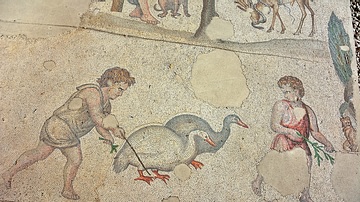
Image
Byzantine Gooseherd Mosaic
The gooseherd: A boy and a girl herding two geese are depicted in this mosaic. Great Palace Mosaic Museum, Istanbul, Turkey. Period: Early Byzantine, circa 6th. century CE. Place: Constantinople, (Modern Istanbul, Turkey). Great Palace Mosaic...
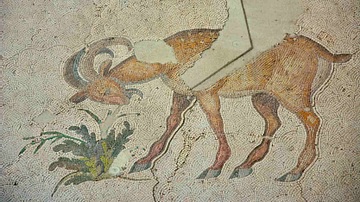
Image
Byzantine Pastoral Mosaic
Detail from the pastoral compositions in the Great Palace mosaics. The Great Palace Mosaic Museum was inaugurated in 1987 CE. The mosaics in the museum mostly depict animals and humans in nature, mythological, pastoral motifs and hunting...
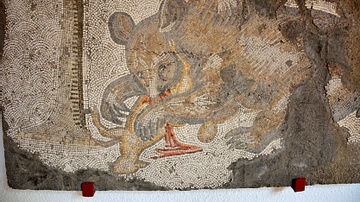
Image
Bear Hunting a Lamb, Byzantine Mosaic
Bear hunting a lamb, Byzantine Mosaic. Period: Early Byzantine, circa 6th. century C.E. Place: Constantinople, (Modern Istanbul, Turkey). Great Palace Mosaic Museum, Istanbul, Turkey. The Great Palace Mosaic Museum was inaugurated in 1987...
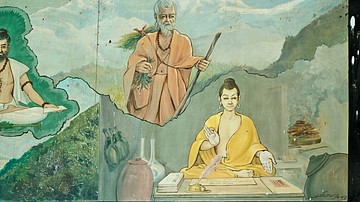
Image
Sushruta Illustration
Illustration depicting Sushruta (Father of Plastic Surgery) from the Sardar Patel Medical College in Bikaner, India.
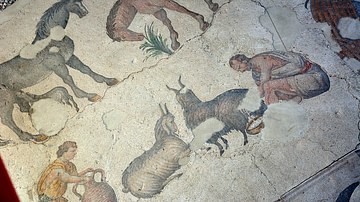
Image
Herdsman Milking a Goat, Byzantine Mosaic
Herdsman milking a goat: An old bearded shepherd is milking his goat and a boy is holding a milk jug. This scene reflects pastoral life. Period: Early Byzantine, circa 6th. century CE. Place: Constantinople, (Modern Istanbul, Turkey). Great...
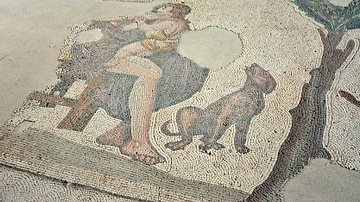
Image
Mother & Dog, Byzantine Mosaic
Mother and the dog: A mother is breastfeeding her baby. The scene is a representation of Isis with her child Horus. A dog on the left of the woman is looking at her with its raised head. Period: Early Byzantine, circa 6th. century CE. Place...
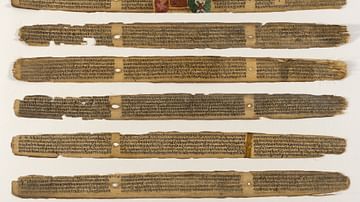
Image
Sushruta Samhita
The Sushruta Samhita (Sushruta's Compendium) is considered the oldest text in the world on plastic surgery and is highly regarded as one of the Great Trilogy of Ayurvedic Medicine. This copy is located in the Los Angeles County Museum of...
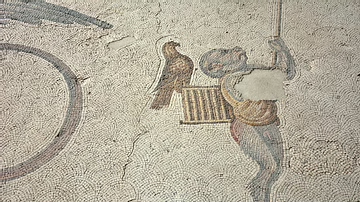
Image
A Monkey Bird-Catcher, Byzantine Mosaic
The Monkey as a Bird-Catcher: The monkey under a date tree is holding a long stick in his hands and trying to catch birds. He has a wooden cage on his back with a bird on it. Monkeys are known to have been used in some chores. Period: Early...
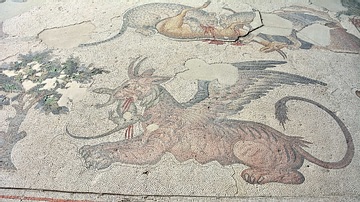
Image
Tigriss-Griffin Byzantine Mosaic
The tigriss-griffin: This tigriss (female) Griffin has two horns and wings and a wild look on its face. Crimson drops of blood come out of its mouth. Period: Early Byzantine, circa 6th. century C.E. Place: Constantinople, (Modern Istanbul...
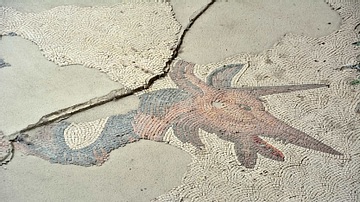
Image
Okapi-headed Leopard-Griffin, Byzantine Mosaic
The okapi-headed leopard-griffin, Byzantine Mosaic, Period: Early Byzantine, circa 6th. century CE. Place: Constantinople, (Modern Istanbul, Turkey). Great Palace Mosaic Museum, Istanbul, Turkey. The Great Palace Mosaic Museum was inaugurated...